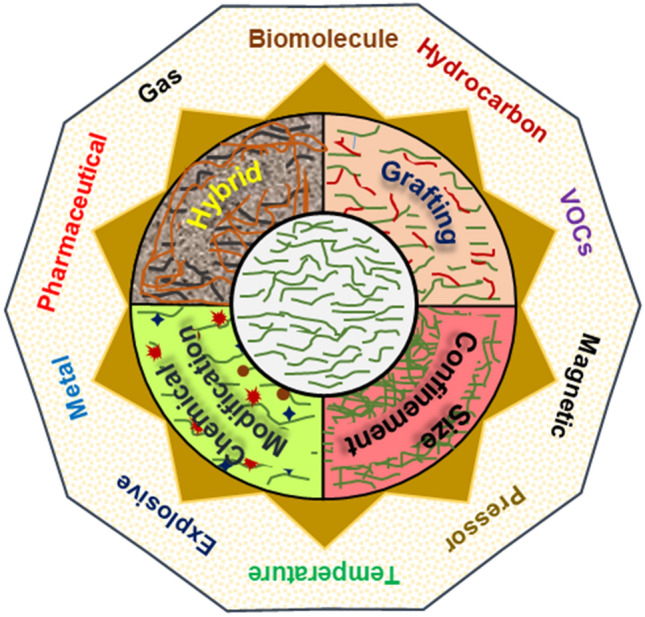- Record: found
- Abstract: found
- Article: not found
Century Impact of Macromolecules for Advances of Sensing Sciences

Read this article at
Abstract
Impact of macro molecular theory on the progress of sensing sciences and technology has been presented in the light of materials developments, advances in physical and chemical properties. The chronological advances in the properties of macromolecules have significantly improved the sensing performances towards gases, heavy metals, biomolecules, hydrocarbon, and energetic compounds in terms of unexplored sensing parameters, durability, and working lifetime. In this review article, efforts have been made to correlate the advances in structure and interactivity of macro-molecules with their sensing behavior and working performances. The significant findings on the macromolecules towards advancing the sensing sciences are highlighted with the suitable illustration and schemes to establish it as a potential “microanalytical technique” along with existing challenges.
Related collections
Most cited references125
- Record: found
- Abstract: found
- Article: not found
Enzyme immobilisation in biocatalysis: why, what and how.
- Record: found
- Abstract: found
- Article: not found
Molecular imprinting: perspectives and applications.
- Record: found
- Abstract: found
- Article: not found

